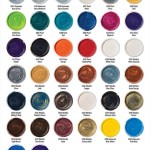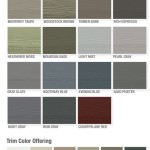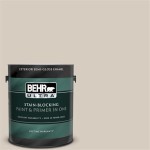What Colour to Paint a Fireplace: A Comprehensive Guide
The fireplace is often a focal point in a living space, drawing attention and contributing significantly to the room's overall aesthetic. Painting a fireplace is a relatively simple and cost-effective way to update its appearance. However, selecting the right colour can be challenging, as it depends on various factors, including the fireplace material, the existing décor, and the desired ambiance. This article explores these factors and provides guidance on choosing the optimal colour for a fireplace.
Understanding Fireplace Materials and Paint Compatibility
Before selecting a colour, it is crucial to understand the material of the fireplace. Common fireplace materials include brick, stone, and wood. Each material requires specific preparation and paint types to ensure proper adhesion and durability.
Brick fireplaces are porous and can absorb moisture, requiring a primer specifically designed for masonry surfaces. Latex-based paints are generally suitable for brick, offering good coverage and flexibility. However, for a more durable and heat-resistant finish, consider using a masonry-specific paint formulated for high-temperature environments, especially around the firebox.
Stone fireplaces can also be painted, but the texture of the stone will significantly impact the final look. A thick, textured paint can obscure the natural beauty of the stone, while a thinner coat may not provide adequate coverage. Similar to brick, priming the stone is essential to ensure proper adhesion. Consider using a paint colour that complements the natural tones of the stone if highlighting its texture is desired.
Wood fireplaces, particularly mantels and surrounds, offer the most versatility in terms of paint choices. However, proper surface preparation is crucial. Sanding the wood smooth, priming, and applying multiple thin coats of paint will result in a professional-looking finish. Consider using a heat-resistant paint if the wooden components are close to the firebox. Oil-based paints offer excellent durability but require longer drying times and more thorough cleaning.
In all instances, ensure the selected paint is specifically formulated for interior use and is low in volatile organic compounds (VOCs) to promote better indoor air quality.
Matching the Fireplace Colour to Existing Décor
The fireplace colour should complement the existing décor of the room, including wall colours, furniture upholstery, and flooring. A cohesive colour scheme creates a harmonious and visually appealing space.
Neutral palettes, such as white, beige, and gray, are versatile and work well with a variety of decorating styles. A white fireplace can brighten a room and create a clean, modern aesthetic. Beige and gray offer a more muted and sophisticated look. These neutral colours allow other elements in the room, such as artwork and furniture, to take centre stage. They are particularly suitable for mantels and surrounds constructed of wood, permitting versatility in the colour scheme.
Bold colours, such as deep blues, greens, or even black, can make the fireplace a statement piece. However, these colours require careful consideration to ensure they do not clash with other elements in the room. A bold colour can work well if it is repeated elsewhere in the room, such as in accent pillows or artwork. Dark colours can create a dramatic and luxurious feel, particularly in rooms with high ceilings and ample natural light.
Complementary colours can also be used to create visual interest. For example, if the walls are painted a warm colour, such as yellow or orange, a fireplace painted in a cool colour, such as blue or green, can create a striking contrast. However, it is important to use complementary colours sparingly to avoid overwhelming the space.
When selecting a colour, consider the overall style of the room. A traditional room might benefit from a classic colour like off-white or a muted sage green, while a modern room might be better suited to a sleek gray or a bold black.
Considering the Desired Ambiance and Room Size
The colour of the fireplace can significantly impact the ambiance of the room. Light colours tend to create a bright and airy feel, while dark colours can create a more cosy and intimate atmosphere. The size of the room should also be considered when selecting a colour.
Light colours, such as white and light gray, can make a small room feel larger and brighter. These colours reflect light, making the space feel more open and airy. A light-coloured fireplace can be particularly effective in rooms with limited natural light.
Dark colours, such as black and deep brown, can make a large room feel more intimate and cosy. These colours absorb light, creating a sense of warmth and enclosure. A dark-coloured fireplace can be a striking focal point in a large living room.
The colour of the fireplace can also influence the perceived temperature of the room. Warm colours, such as red, orange, and yellow, can make a room feel warmer and more inviting. Cool colours, such as blue, green, and purple, can make a room feel cooler and more relaxing. Choosing a colour that reflects the desired ambiance can enhance the overall comfort and enjoyment of the space.
Beyond pure colour, consider the finish. A glossy finish will reflect more light and appear more modern, while a matte finish will absorb light and create a more subdued, traditional look. Eggshell and satin finishes offer a balance between these two extremes.
Another important consideration is the fireplace's function and usage. If the fireplace is used frequently, choosing a colour that hides soot and dirt can be practical. Darker colours tend to be more forgiving than lighter colours in this regard.
Ultimately, the best colour for a fireplace is a matter of personal preference. However, by considering the fireplace material, the existing décor, and the desired ambiance, one can narrow down the options and choose a colour that complements the space and enhances its overall appeal.
Testing paint colours before committing to a full application is crucial. Paint sample colours on a small, inconspicuous area of the fireplace to assess how the colour looks in different lighting conditions and how it interacts with the surrounding décor. Live with the samples for a few days to ensure satisfaction before proceeding with the entire project.
Remember to prepare the fireplace surface properly before painting. This includes cleaning the surface, removing any loose paint or debris, and applying a primer. Proper preparation will ensure that the paint adheres properly and provides a long-lasting finish.
Choosing the right colour to paint a fireplace is a multi-faceted decision. By carefully considering the material of the fireplace, the existing decor of the room, and the desired ambience, one can confidently select a colour that will enhance the beauty and functionality of this central design element. The aim is to create a space that is both visually appealing and reflects individual style and preferences. The fireplace, when painted the right colour, can truly transform a room and become a cherished feature of the home.
:max_bytes(150000):strip_icc()/310555965_180387404555210_7279885457009375134_n-7d077830f3404ff0a4e38f6cf125618f.jpg?strip=all)
36 Gorgeous Painted Fireplace Ideas
:max_bytes(150000):strip_icc()/update-home-interior-brick-german-schmear-0623-df5d1a55d4c54b6abca8dc23cda2af52-069773b50e3a468c966bfa4c94a622e6.jpeg?strip=all)
18 Painted Fireplace Ideas For A Cozy Modern Update

Beautiful Painted Fireplace Ideas For Your Next Diy Curbly

Painted Fireplace Ideas 8 For Painting A

The Top Color Ideas For Painting A Brick Fireplace 700 N Cottage
:max_bytes(150000):strip_icc()/208368922_866049550648380_5600741727305574454_n-533ffc956ce04a8eaa7c81d2f7eb1fdd.jpg?strip=all)
36 Gorgeous Painted Fireplace Ideas

Paint Color Picks For Magnificent Mantels Tinted Sherwin Williams

Painting A Fireplace Tutorial Behr

What Color Should I Paint My Brick Fireplace Macfarland Painting

5 Modern Fireplace Ideas Dulux
Related Posts








